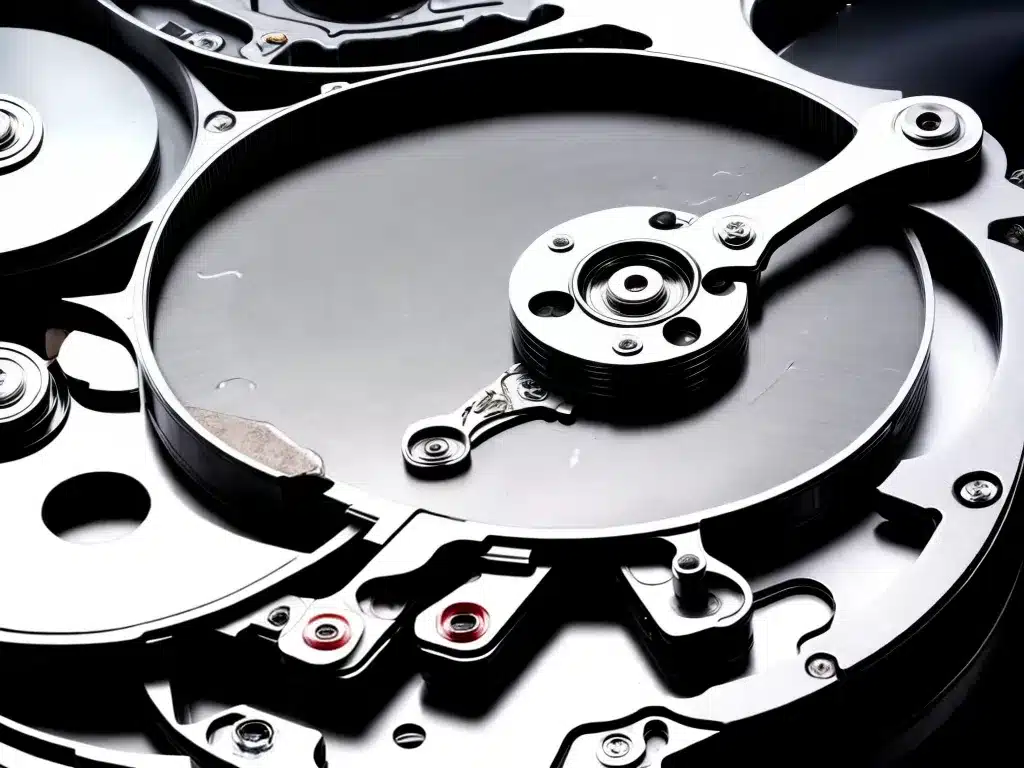
Having a hard drive fail due to bad sectors can be a nightmare. Important files become inaccessible, and the thought of potentially losing those memories forever can be terrifying. Fortunately, in many cases, data can still be recovered from a drive with bad sectors. Here is an in-depth look at why bad sectors occur and the various methods for recovering data from an ailing hard drive.
What Causes Bad Sectors?
A hard disk drive consists of circular platters coated with a magnetic data storage material. These platters are divided into millions of tiny storage cells called sectors. Each sector stores a fixed amount of data, typically 512 bytes.
A sector can go bad for a variety of reasons:
Physical Damage
If a hard drive suffers a physical shock, heads crash, or any other mechanical failure, it can cause physical damage to the platter surface. This damages the magnetic coating, making data storage and retrieval from those sectors impossible.
Manufacturing Defects
During the manufacturing process, some sectors end up with weaker magnetic coatings. These defective sectors fail faster than normal ones.
Degradation Over Time
As a hard drive ages, the magnetic coating degrades. Weak sectors start developing that exhibit increased bit error rates. If too many read/write errors occur, the sector gets marked as bad by the hard drive firmware.
Symptoms of Bad Sectors
Bad sectors manifest themselves in various ways:
- The hard drive starts making unusual clicking or grinding noises
- Data transfer speed slows down drastically
- Files take much longer than normal to open or save
- Computer freezes temporarily while accessing certain files
CHKDSKscan reveals damaged sectors- Hard drive reports S.M.A.R.T errors
If you observe any of these symptoms, there is a high probability that bad sectors are beginning to develop on the drive.
Recovering Data from Drives with Bad Sectors
Software Tools
Many data recovery software tools are available that can read data despite bad sectors. They utilize various techniques like:
-
Reading sectors multiple times – They repeatedly read a bad sector until the drive returns the data successfully.
-
Ignoring bad sectors – They skip bad sectors while reading data from good ones.
-
Error correction – Modern hard drives use error correcting codes to detect and fix a certain number of bad bits. Recovery tools utilize the same error correction algorithms.
Popular recovery software options include Disk Drill, EaseUS, Stellar Phoenix, and Ontrack.
Repair Technicians
For more serious cases of bad sectors, you may need a data recovery specialist. They have access to advanced tools and class 100 clean room facilities. The drive is opened up in the cleanroom, and the platters are placed in a specialized recovery system to read data. These professional services can recover data even if the drive suffered severe physical damage. However, costs for such recovery services can range between $500 to $2000.
DIY Methods
If money is tight, you can try some DIY methods:
-
Freezer trick – This involves placing the hard drive in a plastic bag and freezing it for several hours. Cooling can allow temporarily reading from weak sectors. Retrieve data quickly before condensation forms.
-
Swap PCB board – If the circuit board is damaged but platters are intact, swap the PCB board with one from an identical donor drive. This can help recover data.
-
Connect as a secondary drive – Connect the bad drive as a secondary drive in another computer. Use recovery software to read data by skipping bad areas.
Of course, DIY methods are hit-or-miss. There is no guarantee of success and you could further damage the drive. So proceed with extreme caution.
Preventing Bad Sectors
While bad sectors are often unavoidable, you can take some measures to lower risks:
- Handle hard drives gently and ensure proper ventilation.
- Use surge protectors and avoid bumps/vibrations.
- Perform regular disk error scans.
- Back up your data periodically.
When to Consider a New Hard Drive
If the number of bad sectors exceeds 5% of the total sectors, replacement is advisable. Beyond this point, the frequent remaps and errors will slow the drive to a crawl. Also replace the drive if it starts to overheat or makes loud clicking noises.
While recovering data from a drive with bad sectors can be daunting, hope is not lost. With the right tools and techniques, you still have a fighting chance to rescue those precious files and get a little more life out of the drive! Just be sure to have backups ready for any future drive failures.












